Contact Details
Taps are notoriously complex to manufacturer but that isn’t deterring Thai manufacture SK Precision who are building their capabilities to be the first domestic supplier of taps to the Thailand domestic market.
The Thailand government understands that manufacturing will be a key driver of growth long term and has been encouraging companies to establish facilities in their territories through tax and other incentives. As a result, there is a flourishing automotive and aerospace sector that require suppliers.
SK Precision has around 50 people working two shifts servicing their traditional market of cutting carbide tools and PCD tools. Tibordee Srikul, president of SK Precision, said: “We have been operating for over 20 years and know the local Thai market intimately. We saw an opportunity in the tap grinding segment as until now companies could only source taps from overseas suppliers and that means longer lead times of up to three months and higher cost.
“Our customers want just-in-time products so they can reduce stock and inventory costs. Having a local supplier who can deliver taps in a short period of time helps them achieve a more efficient supply chain.
“Tap’s are a difficult tool to manufacture. A complex application, the geometry and tolerances requirements take a lot of skill and knowledge to produce. At SK Precision we like a challenge and saw the combination of a gap in the market and a new application as something we could make a success.
“I didn’t want to be restricted to producing only one type of tap and after extensive market research we decided to invest in the Tap X because of its flexibility. Our investment in capabilities, both in technology and experience means we can now produce special and standard taps locally. But that is only the beginning, in the future I want to produce spiral tap, point taps and hand taps and forming taps.
“For me and my team it is all about attitude. We are always looking to the future to keep up to date on what technology and market trends are emerging. I like a challenge and I knew that there was great opportunity I could take advantage of. My philosophy is to take on a challenging market and develop it. Attitude is everything and that is how I make sure I am successful - I believe I can do it!”
ANCA has delivered to market a single setup machine for complete tap manufacture. Continuing this tradition of industry firsts, ANCA offers the TapX Linear range of machines – a single setup tap grinding machine with LinX linear motor technology on X, Y and Z axis.
The rigid bisymmetrical column design on the solid polymer concrete base has been the foundation design of ANCA machines over the years. Now, in addition, ANCA’s new LinX cylindrical linear motors and linear glass scales are fitted as standard on X, Y and Z axis for proven and unsurpassed long term reliability and accuracy.
The result is a machine that ensures customers will meet ever increasing market demands of precision tap grinding. TapX machines are purpose-built, with tooling, coolant delivery and automation specifically for production grinding of all types of taps, from M3 up to M50, whether in high speed steel or carbide.
Clever tooling design means change over from one tap type to another can be done in minutes, not hours. This delivers greater flexibility in your tap production and results in increased productivity and reduced costs.
Related Glossary Terms
- coolant
coolant
Fluid that reduces temperature buildup at the tool/workpiece interface during machining. Normally takes the form of a liquid such as soluble or chemical mixtures (semisynthetic, synthetic) but can be pressurized air or other gas. Because of water’s ability to absorb great quantities of heat, it is widely used as a coolant and vehicle for various cutting compounds, with the water-to-compound ratio varying with the machining task. See cutting fluid; semisynthetic cutting fluid; soluble-oil cutting fluid; synthetic cutting fluid.
- grinding
grinding
Machining operation in which material is removed from the workpiece by a powered abrasive wheel, stone, belt, paste, sheet, compound, slurry, etc. Takes various forms: surface grinding (creates flat and/or squared surfaces); cylindrical grinding (for external cylindrical and tapered shapes, fillets, undercuts, etc.); centerless grinding; chamfering; thread and form grinding; tool and cutter grinding; offhand grinding; lapping and polishing (grinding with extremely fine grits to create ultrasmooth surfaces); honing; and disc grinding.
- grinding machine
grinding machine
Powers a grinding wheel or other abrasive tool for the purpose of removing metal and finishing workpieces to close tolerances. Provides smooth, square, parallel and accurate workpiece surfaces. When ultrasmooth surfaces and finishes on the order of microns are required, lapping and honing machines (precision grinders that run abrasives with extremely fine, uniform grits) are used. In its “finishing” role, the grinder is perhaps the most widely used machine tool. Various styles are available: bench and pedestal grinders for sharpening lathe bits and drills; surface grinders for producing square, parallel, smooth and accurate parts; cylindrical and centerless grinders; center-hole grinders; form grinders; facemill and endmill grinders; gear-cutting grinders; jig grinders; abrasive belt (backstand, swing-frame, belt-roll) grinders; tool and cutter grinders for sharpening and resharpening cutting tools; carbide grinders; hand-held die grinders; and abrasive cutoff saws.
- just-in-time ( JIT)
just-in-time ( JIT)
Philosophy based on identifying, then removing, impediments to productivity. Applies to machining processes, inventory control, rejects, changeover time and other elements affecting production.
- linear motor
linear motor
Functionally the same as a rotary motor in a machine tool, a linear motor can be thought of as a standard permanent-magnet, rotary-style motor slit axially to the center and then peeled back and laid flat. The major advantage of using a linear motor to drive the axis motion is that it eliminates the inefficiency and mechanical variance caused by the ballscrew assembly system used in most CNC machines.
- polycrystalline diamond ( PCD)
polycrystalline diamond ( PCD)
Cutting tool material consisting of natural or synthetic diamond crystals bonded together under high pressure at elevated temperatures. PCD is available as a tip brazed to a carbide insert carrier. Used for machining nonferrous alloys and nonmetallic materials at high cutting speeds.
- sawing machine ( saw)
sawing machine ( saw)
Machine designed to use a serrated-tooth blade to cut metal or other material. Comes in a wide variety of styles but takes one of four basic forms: hacksaw (a simple, rugged machine that uses a reciprocating motion to part metal or other material); cold or circular saw (powers a circular blade that cuts structural materials); bandsaw (runs an endless band; the two basic types are cutoff and contour band machines, which cut intricate contours and shapes); and abrasive cutoff saw (similar in appearance to the cold saw, but uses an abrasive disc that rotates at high speeds rather than a blade with serrated teeth).
- tap
tap
Cylindrical tool that cuts internal threads and has flutes to remove chips and carry tapping fluid to the point of cut. Normally used on a drill press or tapping machine but also may be operated manually. See tapping.


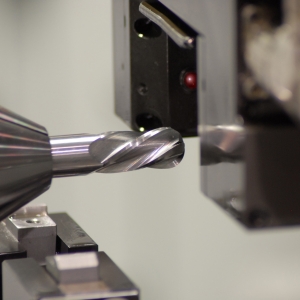
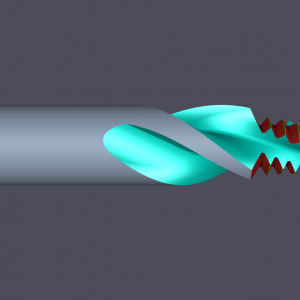

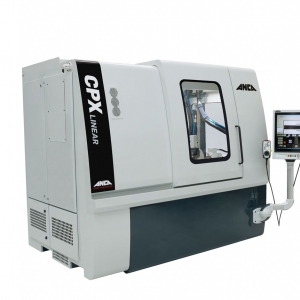

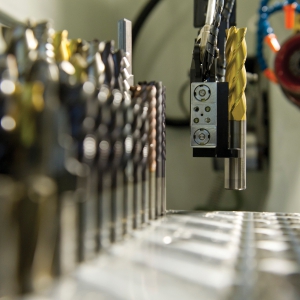
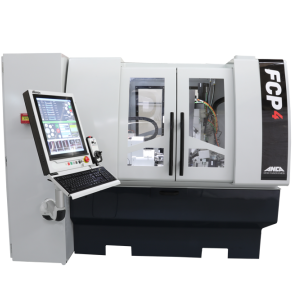
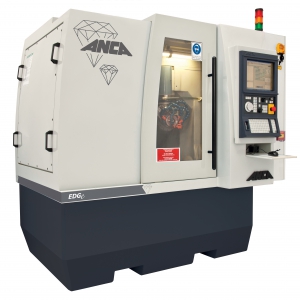
 PRODUCTS
PRODUCTS

